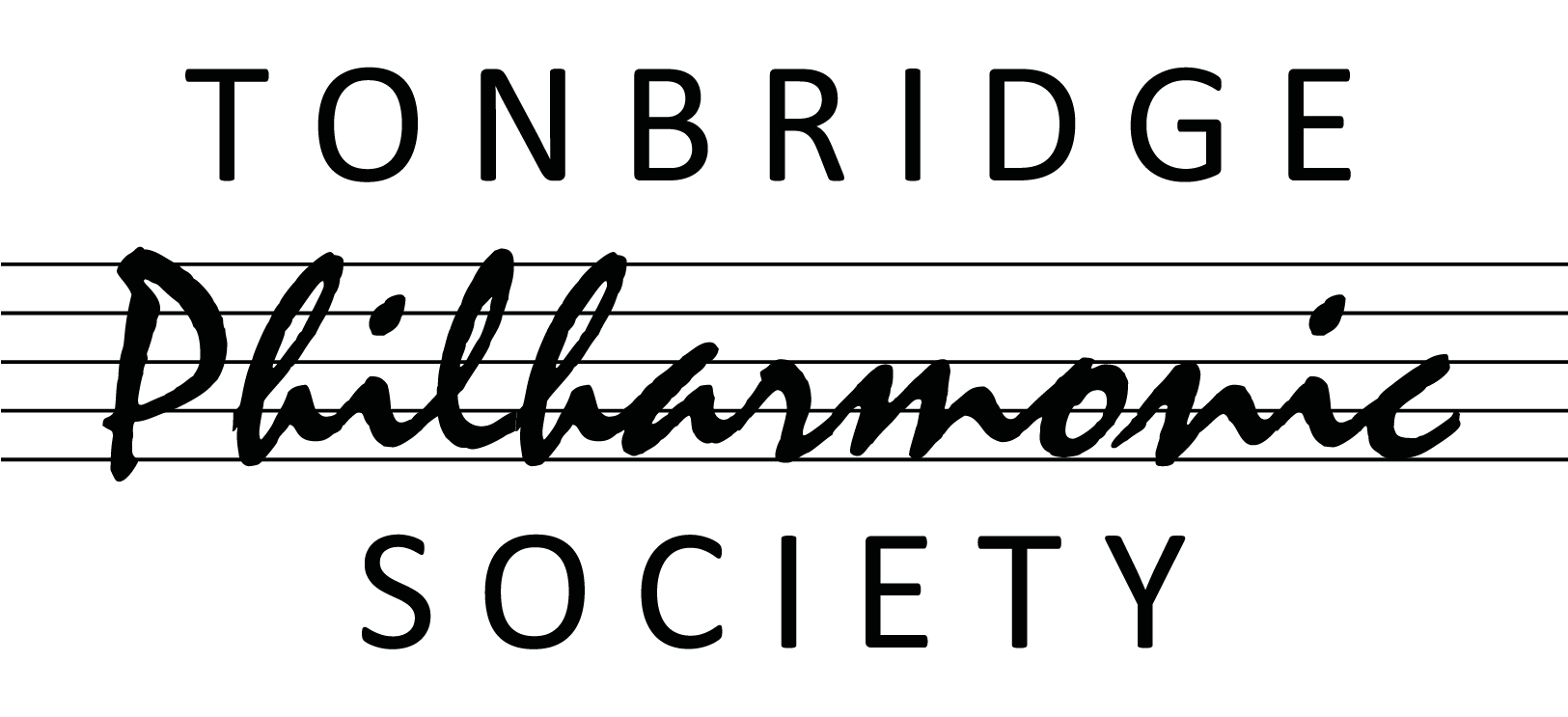The audience was eagerly looking forward to a lively programme of some well-known classics for a warm early-summer evening. It is always a delight to enjoy music of this calibre and the Tonbridge Philharmonic never disappoints. The more concerts I attend the more I appreciate the privilege and unique experience of listening to a live performance.
As we progressed through the evening the orchestra once more excelled – and it was a very packed programme. All their rehearsals and hard work really paid off, as usual. I hope the orchestra enjoyed the huge challenges of all the music as much as the audience did.
It is interesting to compare the acoustics of the different venues as this impacts the sound hugely. Tonbridge School Chapel has high ceilings and sometimes the strings get a little drowned out by the magnificent brass section. The Parish Church, where this concert took place, is more intimate and informal, and the balance of all the sections was fabulous. And importantly it was lovely to have Naomi back and in charge!
Smetana: Vltava (Die Moldau)
This made for a lovely, delicate opening to the concert, with flutes and plucked strings representing the little stream in the mountains from which the river (and the rest of the piece) grows. The rest of woodwind join in, rolling into the melody as it cascades down the river with a rhythmic swing. In the calm middle section it was easy to imagine moonlight on the water with the soft glint of the harp glimmering through beautifully sustained muted strings. The movement picked up pace again as one imagined and felt the current on the river and the wind and brass built to a torrential climax, before the river and the music broadened into the majesty of Prague and disappeared into the distance.
Borodin: Polovtsian Dances
Exciting from the start, with wild clarinets uplifted by strings. The first flowing dance of the Polovtsian maidens is followed by a number of dances, all big and bold. There were some very familiar tunes in which the woodwind shone, supported by a glorious harp. The entire orchestra has an opportunity to entertain and show off in these pieces. All this built to a climax to the familiar Wild Dance of the Men.
Grieg: Peer Gynt Suite No 1
Again, very familiar territory for the audience and a favourite of Classic FM! The Morning Mood of the first movement was caught wonderfully by the woodwind, followed by a haunting second movement for darkly muted strings as Peer Gynt contemplates his mother’s passing. Excellent dynamics here, too, fading away beautifully. Anitra’s dance was delicately played by the strings – part bowed and part plucked. A tricky movement to bring off. Well done TP strings! The rousing end to the first half began as we tiptoed into the Hall of the Mountain King, with perfectly placed staccato from the bassoons and lower strings – eerie but brilliantly done. As the dynamics and speed increased the whole orchestra crescendoed to a thrillingly wild conclusion. Hard to keep everyone together… but fabulous!
Sibelius Symphony No 1
This made me sit up and listen from start to finish as I wasn’t expecting the piece to be so familiar. This wonderful symphony was on repeat on my record player during my school days as I studied for exams. The (already old) LP cover was light blue, with snow on tufts of dried grass, but I had forgotten which piece by Sibelius it was. It became hugely loved and familiar to me and at the concert I found myself anticipating each section, and it was all I could do not to hum along. Tonbridge Phil most certainly gave that 1960s recording a run for its money!
The symphony has a sparse introduction on solo clarinet (thunder rumbling of timpani in the background) before the strings sweep in with the main melodic theme of the first movement. This is already Sibelius at his very best and each movement is practically a compressed symphony in its own right. The entire piece is filled with highs and lows with wonderful wind solos lilting throughout. There are several sections that bring to mind Finlandia and the Karelia Suite, and it sounds as though Sibelius is bringing together the crashing waves, rolling hills and mountain ranges, sun, storms, snow and the Northern Lights of his beloved Finland, all rolled into this first symphony – brilliantly combining rising strings, dancing woodwind and building brass (alternately threatening and gloriously majestic) with the irresistible punctuation of percussion. Flowing section of strings and the harp were magical.
The whole performance was extraordinary and wonderful.

